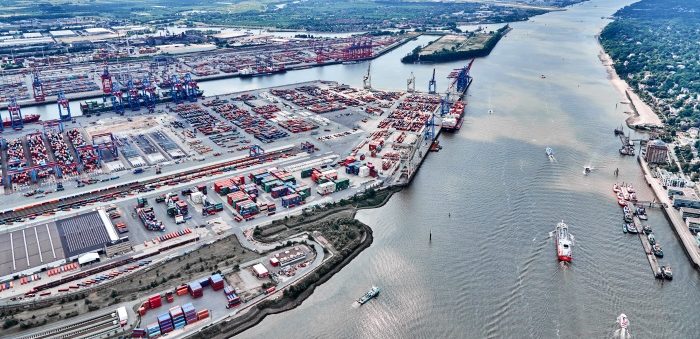Port of Hamburg’s terminal operator Hamburger Hafen und Logistik AG (HHLA) announced the expansion of its rail terminal. Namely, two extra tracks and two new rail gantry cranes have been added to the rail terminal at the Container Terminal Burchardkai (CTB).
Now the rail terminal has ten tracks, instead of eight, while the longest trains permitted can be processed on every track. The second of the new cranes started operations on 18 January. It is the fourth crane operating on the terminal and the final component of the expansion.
Moreover, two rail gantry cranes will serve five tracks each, with all of the cranes using environmentally-friendly green electricity.
[smlsubform prepend=”GET THE SAFETY4SEA IN YOUR INBOX!” showname=false emailtxt=”” emailholder=”Enter your email address” showsubmit=true submittxt=”Submit” jsthanks=false thankyou=”Thank you for subscribing to our mailing list”]
The expansion increases the rail terminal’s capacity by about 200,000 standard containers (TEU) to around 850,000 TEU per year. Since 2010, annual rail throughput at CTB has increased by almost 50%. At the same time, the share of rail transport in the total container volume at the Port of Hamburg rose between 2010 and 2017 from 36.5% to 42.8%. This makes Hamburg the largest rail port in Europe by far.
The expansion of rail transport capacities at CTB could increase rail’s share in the diverse range of carriers even further in the medium term, explained HHLA Executive Board Member Jens Hansen: “The numerous high-frequency rail connections give the Port of Hamburg a clear advantage against other European ports. We believe rail connections will increase considerably from 2020 through the improved transport connections of CTB. And we are already perfectly prepared for this.”
In addition, HHLA plans to invest in the expansion of its terminal facilities and in the extension of intermodal transport and handling capacities. By 2022, the company wants to invest €800 million in the Port Logistics subgroup, of which €450 million has been earmarked for the Container sector and €350 million for the Intermodal segment.

































































